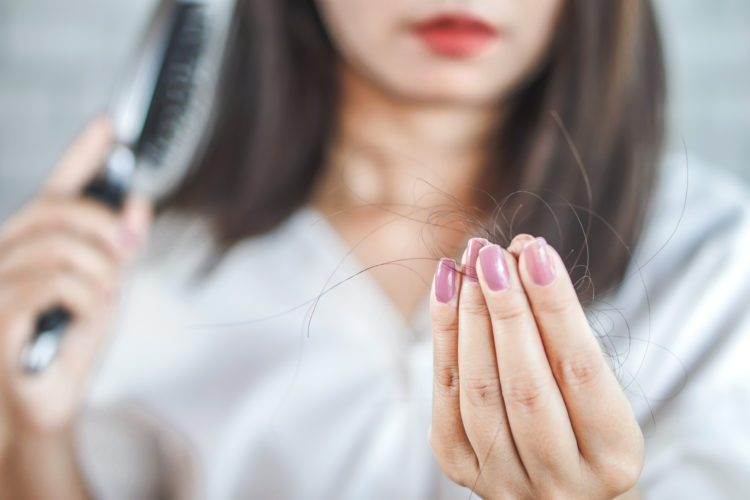When to See Your Dermatologist about Hair Loss in Women

It’s normal to lose about 50 to 100 hairs every day, which you are most likely to notice while washing or brushing your hair. However, if you start to notice thinning areas or bald spots, you may be experiencing hair loss, also called alopecia.
While anyone with this condition can feel self-conscious, hair loss is particularly upsetting for women. Fortunately, most causes of hair loss—from heredity to stress to hormonal changes after giving birth—can be treated and reversed. Here’s more information about hair loss in women to give you an idea of when to see your dermatologist.
Types of Hair Loss in Women
Alopecia may take on several different forms, including gradual thinning, bald spots, receding hairline, or complete baldness. Here are the most common types of hair loss seen in women, along with their most likely causes:
- Androgenetic alopecia, or male/female pattern baldness: In women, this form of hair loss manifests as thinning on the crown of the head. It’s the same condition that causes a receding hairline in men. Heredity plays a major role in male and female pattern baldness.
- Telogen effluvium: People may experience this type of hair loss after undergoing something traumatic, such as a severe infection, childbirth, major surgery, or extreme stress. Hair may begin shedding in excessive amounts six weeks to three months after the traumatic event. In acute cases, the hair should grow back on its own after the event passes. However, some women experience chronic telogen effluvium with no apparent trigger.
- Alopecia areata: This is an autoimmune disease that causes the body to attack its own hair follicles. People with alopecia areata are often in excellent health aside from small bald patches that form across the scalp. These bald spots are also often associated with an itchy scalp. In most cases, the hair grows back within one to two years; treatment simply speeds up the process.
- Anagen effluvium: This form of hair loss is associated with chemotherapy. Since this treatment attacks rapidly dividing cancer cells, other rapidly dividing cells, such as hair follicles, become collateral damage.
- Traction alopecia: Tight hairstyles—including cornrows, braids, tight ponytails, and hair extensions—can traumatize hair follicles and cause them to stop growing. Spotting the condition soon enough and altering your hairstyle may allow you to reverse traction alopecia without treatment.
When to See Your Dermatologist
If you feel self-conscious about your hair loss, don’t hesitate to visit a dermatologist. All types of hair loss are treated differently, so we recommend speaking with a professional to ensure you pursue the proper treatment.
Swinyer-Woseth Dermatology in Salt Lake City diagnoses and treats all types of hair loss. After an evaluation and possible biopsy, you can expect an accurate diagnosis for your form of alopecia. This is the first step toward treating and reversing your condition.
To schedule a hair loss consultation in Salt Lake City, please call us at 801-266-8841 today.
